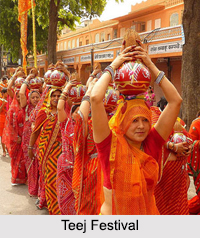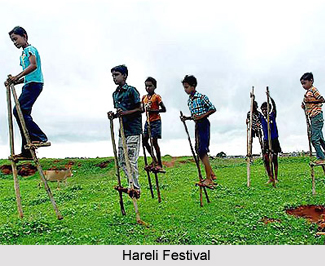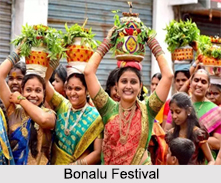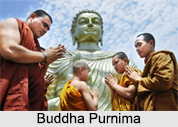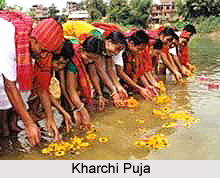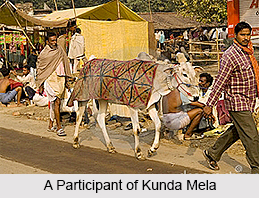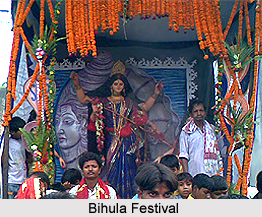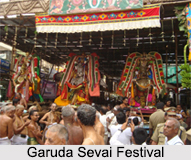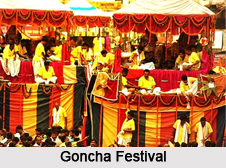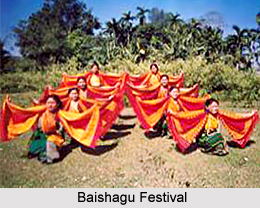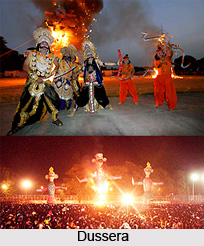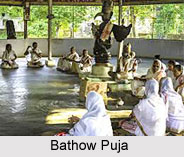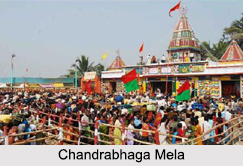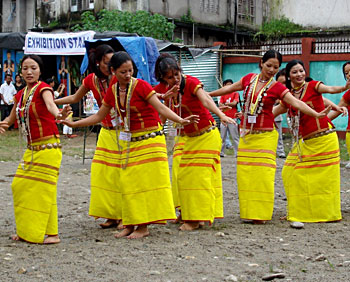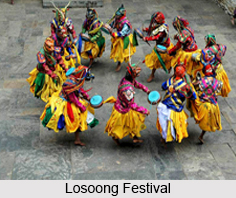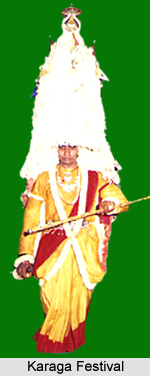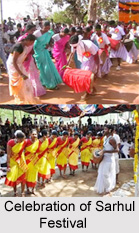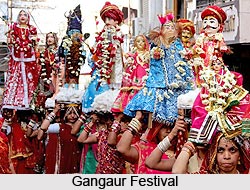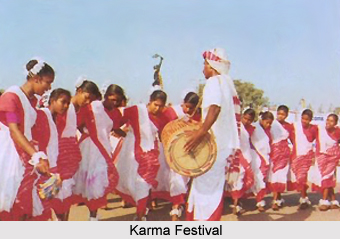"Shalakarma" is the ceremony celebrated in Hindu families for the opening of a new house. `Shala` means keeping the men and animals in a safe house, built up by the people. According to the earlier Hindu scriptures, one needs to follow many rules while building a new house. A man is needed to build a house in such a way that the doors remain in the right direction of doors, the corners remain in the right of the corners and the rooms are opposite to the rooms. It needs to be very nice and attractive so that the learned persons start praising as they see it.
The main thing, which is kept in mind while building a house, is the protection and comfort of the inmates in all seasons. So, the expert engineers and architects are appointed to build it and earlier these persons needed to be master in the four Vedas. The entire process of "Shalakarma" includes the building and opening of the house. It is always kept in mind that the fresh air enters in the house and it removes off the bad air. One more important thing is that there should be enough space to perform the `Homa` of odiferous ghee, which removes the air of bad smell and spread out the air of good smell.
According to the "Shalakarma", the doors of the building should be directly straight on the equal measurement of one yard. The residential house should have area less than 3 x 3 yards, the central portion 6 x 6 yards and the side wings of the areas is less than 4 x 4 yards. The meeting place should have doors on all sides and round pillars in the middle and there should be open space for the bad air to go out and fresh air to enter into the building. The ventilation space, trees, flowers and a pond of lotus around the residential house are also must. The owner of the house starts building the house chanting a prescribed mantra. The house needs to have its front in the east and doors in the west because there is no danger in this way. The west doors should be in the front of east, in which there should be the place for `Agni`, water and fixed place for the meditation of God and there should be also a first gate. Then a prescribed mantra is dedicated to the architect of the house also.
Now, as the building of the house is completed, the "Shalakarma" gives the procedure for entering into the building. The house is first cleaned very nicely. The four Vedis are prepared outside in four directions on the doors. A `Kunda` of copper metal is made in the middle, which can be taken to everywhere and all the rituals are performed in one Kunda only.
According to the `Samanyaprakarana`, all the materials of "Shalakarma" Yajna like fuel wood, ghee, rice, sweet, odoriferous vigour-giving things are kept in a safe and clean place one day before the ceremony. The master of the house should be in good mood on the day of the ceremony. The four priests of the `Yajna` viz Hoter, Udgatar, Adhvaryu and Brahman who are pious and learned be selected and appointed.
The Hotar sits in the west and keeps his face in eastward. The Adhvaryu sits in the north and keeps his face in the west. The Brahman sits in the south while facing in north direction and the Udgatar sits in the east keeping his face in the westward. Now the master of the house takes his seat. Now, the master decorates the building with flower, leaves of mango, the leaves of plantain to increase their beauties and says,
"O Brahman! May I enter this house? And the Brahman, the chief replies,
"Better you enter in".
Thus proceeding with the "Shalakarma" ceremony, the master enters the house with the permission of Brahmin and says, " May I attain the knowledge and may I attain all auspiciousness and prosperities." The master then brings warm ghee and odoriferous materials from the gate, which he entered from. He then performs the Agnayadhana, Samidadhana, Jalaprokshana, and Achamani according to the Samanyaprakarana. The master now offers four ghee-oblations of Agharavajyabhagahutis, four of Vyahriti and 9 oblation of Svistakrit. Then he offers two oblations in the Kunda at the east door with the two prescribed mantras. In the same way, two oblations of ghee is offered one with each in the Kunda at the southern door with the two prescribed mantras. And the two more oblations are offered in the Kunda at the north door. Then, two oblations are offered at the central Vedi of the Kunda as the "Yajna" priests sit in four directions properly. Then an oblation of ghee is also offered in the Central Vedi with the prescribed mantras.
In the ceremony of "Shalakarma", now the fire of the Vedi of the east door is enkindled, the Brahman and the Hotar are seated in the south of the Vedi and a water full jug is placed in the north of the Vedi. The `Sthalipaka` is prepared as per the `Samanyaprakarana` and the master enters in the middle room of the house. Now, the master sits with the priests and distributes the warm ghee, mixed with musk, odoriferous things in pots and keeps these in front of the priests. Now he offers four oblations of ghee with these four mantras,
• "O master of the grand wordly structure! Grant your blessing to us. May our entrance in the house be wholesome for us. Whatever wealth we desire from you please give us. May you be gracious for our bipeds and quadrupeds. Whatever has been uttered therein is true."
• "O master of the grand worldly structure! Thou art the augmentator of our fortunes. O mighty power! Come to us increasing our wealth with kins and horses. In your friendship we may not be overcome with old age before time. You shower your affection and grace upon us like a father to his sons.
• "O master of the grand worldly structure by thy grace we obtain the place auspicious, nice and full of wealth. Thou guard us properly in attaining whatever we have not attained and in preserving whatever we have attained. O Lord! Thou protect us always with pleasure and plenty.
• "O Master of grand worldly structure! Thou art the dispeller of all calamities and disease. Thou pervade all the forms and shapes of the world. Thou art our friend and be gracious upon us."
Now, to continue with the "Shalakarma", the `Sthalipaka` is mixed with ghee and kept before all the priests. Now, six oblations of these are offered with this mantra, "Let Gopayamana and Rakshmana guard us from the southern side. The day is Gopayamana and night Rakshamana and I know their utility. May they both by God`s grace protect us in the south. Let Didivi and Jagrivi guard us from West. The grain is Didivi and guards us from the west. The grain is Dividi and the vital air Jarivi and I realise the utility of both of them. May they both by God`s grace protect us from the west."
The same is repeated in the north direction with this mantra, "Let Asvapna and Anvadrana become the source of our security from the north. This moon is Asvapana and Vayu Anavadrana and I know their operations. May they both protect us from the north. The two door wings of the house are like the pillar of Dharma and Lakshmi and are like day and night. These houses (rooms) full of the herbs of animal of animal and wealth are like the house of kind. I accept these rooms with progeny and wealth. Let us flourish in this house where we have invited relatives, well-wishers, intimate persons and the gathering of gents and ladies. May our houses be full of good children".
Thus the procedure of "Shalakarma" completes here. The master of the house offers respect to the priests and their wives, friends and well wishers and relatives. He offers `Dakshina` to the Brahmans with full respect. Then the ladies see off ladies and gents see off gents in delight and contentment. The guests take leave while blessing to the master and mistress of the house.
In the same way, the opening of the garden is performed. Here, only distinction is that the `Homa` is performed in the side of the garden so that the fragrance of the Homa makes the trees and plants fragrant. If the house is already built there then this is also opened in the same way. Here ends the procedure of "Shalakarma".
